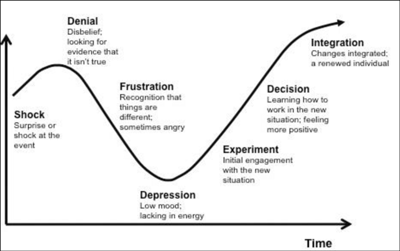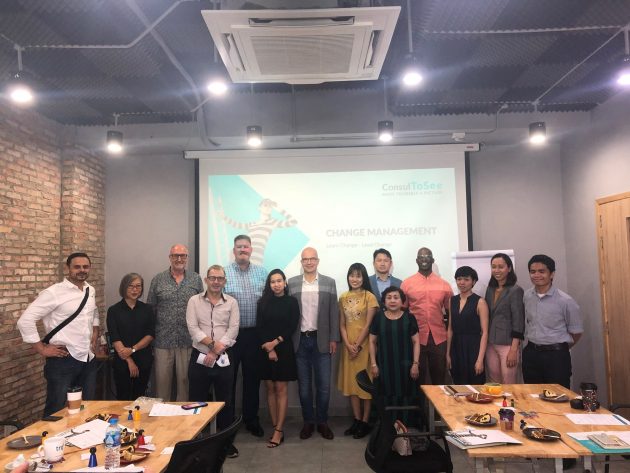September 10, 2020 - Everyone can be the catalyst for change. However, if managers or employees had a terrible experience with change, it is understandable that resistance will be their first defence mechanism. Through this month's TRG Talk, Torsten hopes to help managers and leaders to understand these different stages and reactions to change so we can all bounce back faster and thrive.
When we look back a couple of years from now, 2020 will always be remembered as a year full of unpredictable turns. We all had to make several amendments to our daily routines, whether we like it or not. Everyone experiences and reacts to changes differently, depending on each individual's circumstances and positions. Some quickly accept and learn to embrace change while some others resist.
In this month’s TRG Talk: Project Management, Torsten Seeger, Founder of ConsulToSee, shares how he accepts the fact that the recent pandemic has disrupted his business, thus, finding a solution is his top priority, even if it means venturing into a completely new career path.
Change is inevitable
Change management might be an age-old topic, but it never becomes irrelevant. Especially during today’s highly VUCA world, change is constant. Torsten begins the Talk by inviting participants to discuss a past instance of change and their responses to that specific experience.
There is a mixture of answers from our participants. While a portion of our participants undoubtedly feels fear and confusion, several others feel happy and excited when changes occur.
Torsten explains that fear, confusion and even resistance is normal as shifts mean we have to move out of our comfort zone, the safe haven where everything is under our control. However, getting out of this comfort zone is the first step to get us into the growth zone, another most talked-about topic in today’s fast-paced world and where many leaders strive to achieve.

The different zones one has to go through to get to the growth zone.
Understanding the stages of change using the Kubler-Ross model
The Kubler-Ross change curve, also known as the five stages (sometimes seven) of grief, is a model that represents the complex emotions an individual expresses as they are approaching death. Kubler-Ross' research and concept received universal acceptance and got adopted to a variety of cases and situations relating to change.
The model remains valid when applied to business. As we previously mentioned, change is inevitable, and there is no running away from it. If we are well prepared for the reforms ahead, we can surely reap positive results in returns. But despite our best effort, change is hard to accept or even appreciated.
In the business context, change can stem the management themselves, or the employees can act as the catalyst for change. The goal of a change initiative is to improve a certain process or system. However, what many organisations and managers fail to acknowledge are people's reactions. Companies cannot just invest in new, advanced technologies or processes while overlooking the investment on people to help them transition, to adapt and change accordingly.
The transformation can be traumatic to individuals, and this is where the Kubler-Ross model comes in to help managers and leaders better understand the different stages one has to go through to transition.
The more support that managers and leaders put in to make the transitions of their employees as smooth as possible, the easier it will be for organisations to achieve success.
Read more: 3 essential steps to help managers manage change

As we learn from a discussion among our participants, change management can be a top-down or bottom-up approach. Additionally, each player of the process needs to possess certain competencies:
- The initiator (e.g. CEO): lead, communicate, awareness
- The implementer (e.g. managers): implement, delegate, communicate, awareness
- The executor (e.g. team members): implement communicate, awareness
According to Torsten, awareness and communication are the two most critical competencies leaders need to master to motivate their team members and to successfully navigate through change. Be patient, be transparent, and be the role model for your employees. Though change is not easy, it is vital for growth.
About TRG Talk
TRG Talk is a series of events co-organised by TRG International and PJ’s Coffee Vietnam to promote the latest trends in the IT industry and the HR world, as well as tips and trick in improving your project management skills.
About TRG Talk - Project Management
A good Project Manager must be able to identify problems and risks. He/ She also needs to know how to minimise these issues and is able to make the decision needed throughout the entirety of the project. Do you consider yourself a good project manager? Do you have the required skills and power to handle the situation and the people involved in your project?
TRG Talk - Project Management is a monthly meetup that allows project managers to discuss in detail what it takes to become great at what you're doing. The event takes place every first Thursday of the month.
 English
English  Vietnamese
Vietnamese 





